A raíz de la boda de mi sobrino en el condado de Somerset, Inglaterra, tuve mi primera visita europea desde hace bastante tiempo. Impresionan las diferences en la avifauna, pero también se notan algunas semejanzas e incluso hay un par de especies idénticas a las de Costa Rica. Esta visita no me dio ninguna oportunidad para pajarear, así que mis avistamientos fueron muy pocos y puramente incidentales. Aquí encontrarán una resumen de las especies que vi, especies que simplemente no se pueden pasar por alto en casi cualquier ámbito rural de Inglaterra:
The marriage of my nephew in the county of Somerset in southwest England gave me my first trip to Europe in quite some time. The differences in bird life are striking and yet there are also similarities and even one or two species that are identical. This was not a birding trip and so my sightings were few and merely incidental. Here’s a breakdown of those that I glimpsed, species that are almost impossible to miss in any part of rural England:
Completamente diferente: Aunque los cisnes, en este caso el Mute Swan (Cygnus olor), no tienen representante en CR, son miembros de la familia Anatidae. Es una ave totallmente blanca, enorme y poderosa, que se encuentra por todas partes en lagunitas y lagos por todo el país, muy a menudo en los parques urbanos donde le dan de comer los visitantes.
Completely different: Although swans, in this case the Mute Swan (Cygnus olor), are not represented at all in Costa Rica, they are members of the Anatidae waterfowl family. This is a huge and powerful, all-white bird found on ponds and lakes everywhere, often in parks where visitors love to feed it.
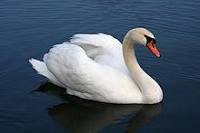
Mute Swan, courtesy of Wikipedia
Especies idénticas: El House Sparrow (Passer domesticus) es una especie cuyos números han bajado en años recientes pero que todavía se ve en todas partes tanto en las ciudades como, aunque con menos frecuencia, en el campo. No se encuentra aquí en San Antonio de Santa Cruz pero está presente tanto en la ciudad de Turrialba como en todos las demás ciudades de la América del Norte y de la América Central.
Identical species: The House Sparrow (Passer domesticus) is a species whose numbers have declined in recent years but it is still to be found everywhere in both town and, to a lesser extent, country. It is not present in my village of San Antonio, here in Costa Rica, but it is present in good numbers in the town of Turrialba, as in all other larger towns and cities in North and Central America.
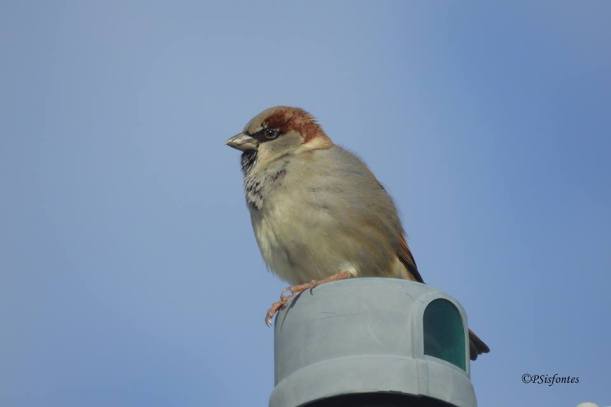
Male House Sparrow in Costa Rica, courtesy of Pablo Sisfontes
¿Especie también idéntica? El Common Moorhen (Gallina chloropus) se asemeja mucho a nuestro Common Gallinule (Gallinula galatea), el cual hasta fechas muy recientes se llamaba en inglés Common Moorhen.
Also identical? Common Moorhen (Gallinula chloropus) looks pretty much like our Common Gallinule (Gallinula galatea), whose English name was in point of fact Common Moorhen until very recently.
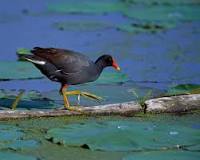
Common Moorhen (Gallinula chloropus)
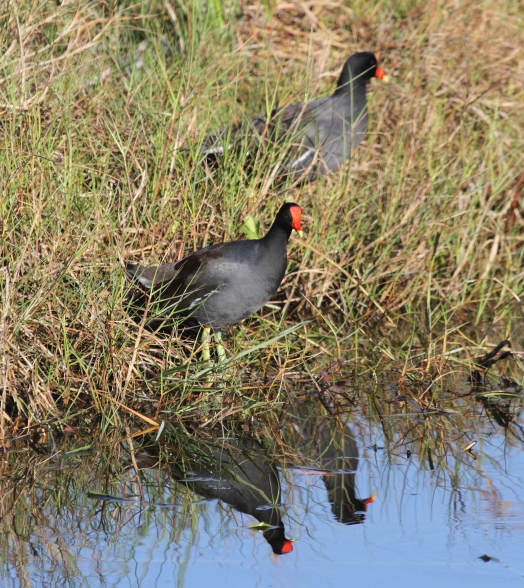
Nuestro Gallinula galatea (antes Common Moorhen) en Florida, foto muy bella por cortesía de Karel Straatman
Casi igualitos, ¿verdad?
Practically identical, aren’t they?
La garza más común de Inglaterra y de Europa Occidental es el Grey Heron (así se escribe en el inglés británico) (Ardea cinerea). Tal vez no se confundiría con nuestro Great Blue Heron (Ardea herodias) el cual es bastante más grande y de plumaje mucho más oscuro.
The commonest heron species in England and Western Europe is probably the Grey Heron (Ardea cinerea). It would perhaps not be confused with our Great Blue Heron (Ardea herodias).
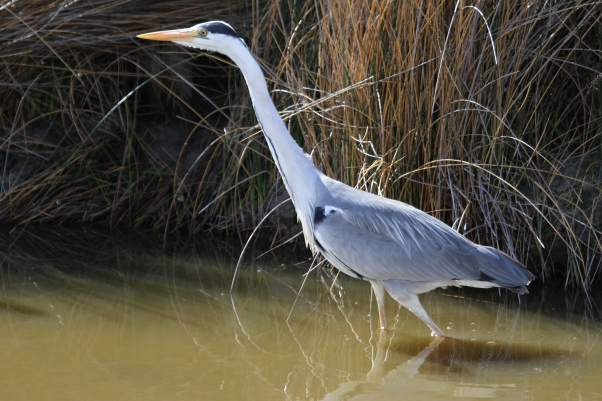
Grey Heron (Ardea cinerea) en La Camargue, Francia, por cortesía de Karel Straatman
Para comparar:
By comparison:

Nuestro Ardea herodias, acompañado de un Little Blue Heron en el CATIE, Turrialba, cortesía de John Beer
Finalmente, aquí en Costa Rica ya están los migrantes llegados del norte, mientras que en Inglaterra ya han volado hacia el sur. Sin embargo vi un solitario y atrasado Common House Martin (Delichon urbica). Como indica su nombre en inglés, esta especie es muy común y anida bajo los aleros de las casas. Es una golondrina de plumaje tal vez más parecido al del Violet-green Swallow (Tachycineta thalassina) que al plumaje del Blue-and-white Swallow (Pygochelidon cyanoleuca) tan común aquí en San Antonio, el cual carece de rabadilla blanca:
Finally, northern migrants have now arrived here in Costa Rica, while in England they have already flown south. I nonetheless found a solitary late departure, a Common House Martin (Delichon urbica). As its English name indicates, this species is very common and nests under the eaves of houses. The plumage of this swallow species is perhaps more like that of our Violet-green Swallow (Tachycineta thalassina) than the Blue-and-white Swallow (Pygochelidon cyanoleuca) that is so common here in San Antonio but which lacks the white rump band:




I see you found a little time to view some birds. Sounds like a lot have gone south. Same here, a lot of our summer birds have gone south. I did see a rarity here yesterday. Common everywhere else in the Midwest, but up here along the big lake, very rare, a northern Cardinal. Lots of soaring raptors though heading south down the lake following the fall wind currents.
LikeLike
Hope to get the raptors in numbers here soon. First Broad-winged Hawks have arrived.
LikeLike